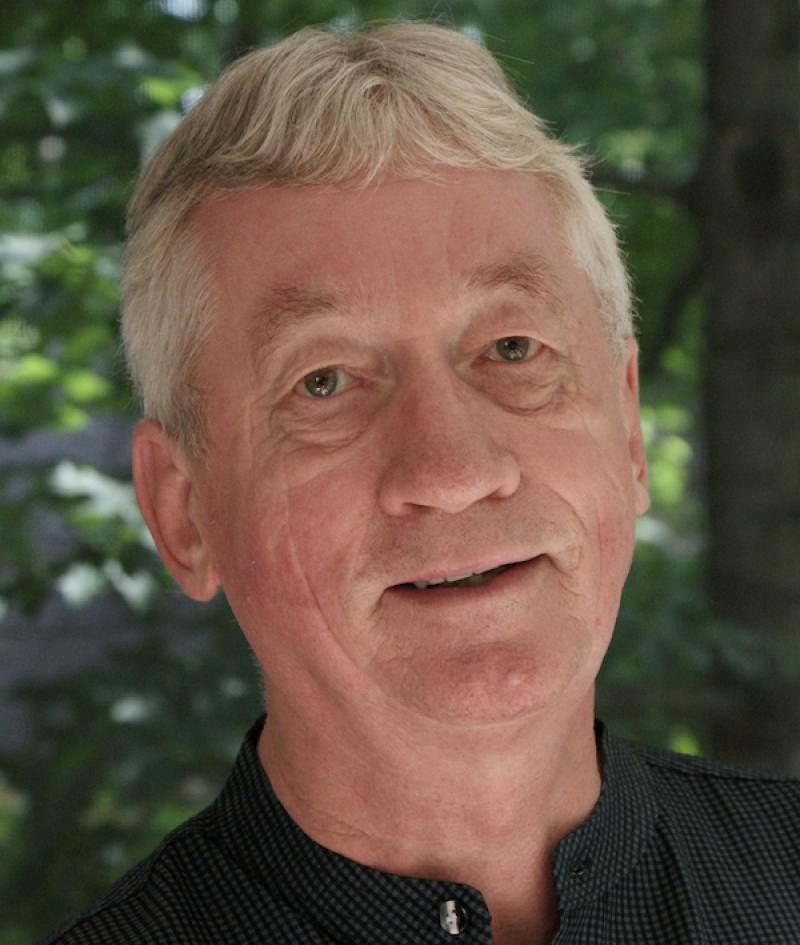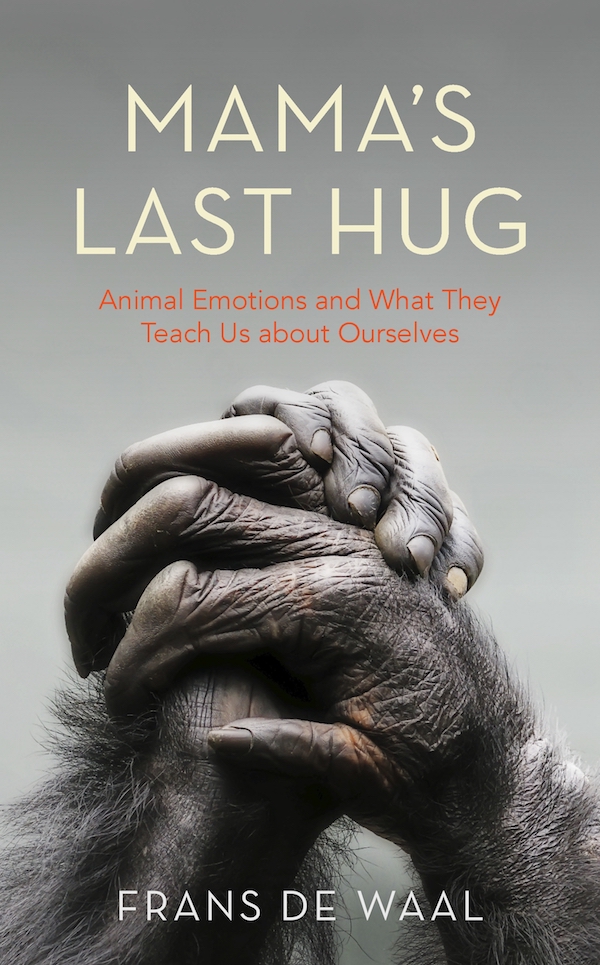Frans de Waal: Mama's Last Hug review - animal feelings | reviews, news & interviews
Frans de Waal: Mama's Last Hug review - animal feelings
Frans de Waal: Mama's Last Hug review - animal feelings
Enlightening insight into animals' emotional and social worlds

Primatologist, ethologist, zoologist, biologist, social psychologist, behaviourist – how may ‘ists’ can one person have? Dutch-American scientist Frans de Waal has helped revolutionise how we think about the attributes of fellow animals. He writes for the lay reader without condescension, mixing anecdote with plenty of citations from controlled experiments.
De Waal has spent more than forty years studying primate colonies, notably chimpanzees and bonobos, mostly at the National Primate Centre in Georgia, helping to transform and change human understanding of our fellow animals who inhabit this planet.
More and more the human race is realising through scientific investigation that animals too have both emotions and feelings, and De Waal distinguishes between the two categories. His contention is that animals, with the same vital organs from brain and heart to liver and pancreas, don’t just react mechanistically to ensure survival. For the vast majority of living things – even single-cell life is adduced – actions are propelled by emotions.
 What we may never understand are the interior feelings of living things. Thus the moving episode that gives the book its title: the visit of the octogenarian biologist Jan Van Hooff to Mama, the long-lived matriarch of the largest colony of chimpanzees in captivity. Mama sunk in terminal lethargy recognises her visitor, shrieks in greeting and hugs him. Whether Mama realises her impending mortality is unclear; what is evident (the clip has gone viral) is the loving recognition the chimpanzee affords her human visitor.
What we may never understand are the interior feelings of living things. Thus the moving episode that gives the book its title: the visit of the octogenarian biologist Jan Van Hooff to Mama, the long-lived matriarch of the largest colony of chimpanzees in captivity. Mama sunk in terminal lethargy recognises her visitor, shrieks in greeting and hugs him. Whether Mama realises her impending mortality is unclear; what is evident (the clip has gone viral) is the loving recognition the chimpanzee affords her human visitor.
Why animals have emotions beyond those needed for survival is the subject of De Waal’s enthralling book. His main academic study is what makes primates co-operate and work together as an alternative to competition. The social interactions of primates are exercises in political dominance and family dynamics which involve teasing, reconciliation and keeping the peace, but also gratuitous cruelty and even murder. (De Waal identifies chimpanzee behaviour in the alpha male antics of Donald Trump.) Bonobos – not so secretly his favourites – solve most of their problems through sex, share food across territories, and are led essentially by females, with mothers promoting the fortunes of their sons.
Along the way we learn that rats enjoy being tickled, that hermit crabs may feel pain and that the author’s six clown loaches in his garden pond were inhospitable to any newly introduced clown loaches. He even observes how a depressed goldfish communicates its distress to fellow fish.
His most startling – and heart-breaking – statistic is that of life on earth today only three percent consists of wild animals, while humans make up 24 percent. The rest are animals domesticated for our consumption. Because of the conditions in which most are kept, it had been more than inconvenient to acknowledge their sentience and emotional life. Though eloquent in defence of the best zoos, De Waal is scathing about this denial and extremely persuasive about ways to bring about better conditions – even if cynical about the likely outcome. (And the rest of us are not much help. Those of us who turn vegetarian are, it seems, typically only able to keep it up for about a year.)
Above all, the social lives of animals are nothing less than relationships beyond words. De Waal proposes that for humans as well as other animals body language is the most powerful communication tool of all. Far from anthropomorphism, so-called animal behaviour illuminates the human: under the skin we are all related. This book is a mind changing marvel.
Add comment
The future of Arts Journalism
You can stop theartsdesk.com closing!
We urgently need financing to survive. Our fundraising drive has thus far raised £49,000 but we need to reach £100,000 or we will be forced to close. Please contribute here: https://gofund.me/c3f6033d
And if you can forward this information to anyone who might assist, we’d be grateful.

Subscribe to theartsdesk.com
Thank you for continuing to read our work on theartsdesk.com. For unlimited access to every article in its entirety, including our archive of more than 15,000 pieces, we're asking for £5 per month or £40 per year. We feel it's a very good deal, and hope you do too.
To take a subscription now simply click here.
And if you're looking for that extra gift for a friend or family member, why not treat them to a theartsdesk.com gift subscription?
more Books
 'We are bowled over!' Thank you for your messages of love and support
Much-appreciated words of commendation from readers and the cultural community
'We are bowled over!' Thank you for your messages of love and support
Much-appreciated words of commendation from readers and the cultural community
 Thomas Pynchon - Shadow Ticket review - Pulp Diction
Thomas Pynchon's latest (and possibly last) book is fun - for a while
Thomas Pynchon - Shadow Ticket review - Pulp Diction
Thomas Pynchon's latest (and possibly last) book is fun - for a while
 Justin Lewis: Into the Groove review - fun and fact-filled trip through Eighties pop
Month by month journey through a decade gives insights into ordinary people’s lives
Justin Lewis: Into the Groove review - fun and fact-filled trip through Eighties pop
Month by month journey through a decade gives insights into ordinary people’s lives
 Joanna Pocock: Greyhound review - on the road again
A writer retraces her steps to furrow a deeper path through modern America
Joanna Pocock: Greyhound review - on the road again
A writer retraces her steps to furrow a deeper path through modern America
 Mark Hussey: Mrs Dalloway - Biography of a Novel review - echoes across crises
On the centenary of the work's publication an insightful book shows its prescience
Mark Hussey: Mrs Dalloway - Biography of a Novel review - echoes across crises
On the centenary of the work's publication an insightful book shows its prescience
 Frances Wilson: Electric Spark - The Enigma of Muriel Spark review - the matter of fact
Frances Wilson employs her full artistic power to keep pace with Spark’s fantastic and fugitive life
Frances Wilson: Electric Spark - The Enigma of Muriel Spark review - the matter of fact
Frances Wilson employs her full artistic power to keep pace with Spark’s fantastic and fugitive life
 Elizabeth Alker: Everything We Do is Music review - Prokofiev goes pop
A compelling journey into a surprising musical kinship
Elizabeth Alker: Everything We Do is Music review - Prokofiev goes pop
A compelling journey into a surprising musical kinship
 Natalia Ginzburg: The City and the House review - a dying art
Dick Davis renders this analogue love-letter in polyphonic English
Natalia Ginzburg: The City and the House review - a dying art
Dick Davis renders this analogue love-letter in polyphonic English
 Tom Raworth: Cancer review - truthfulness
A 'lost' book reconfirms Raworth’s legacy as one of the great lyric poets
Tom Raworth: Cancer review - truthfulness
A 'lost' book reconfirms Raworth’s legacy as one of the great lyric poets
 Ian Leslie: John and Paul - A Love Story in Songs review - help!
Ian Leslie loses himself in amateur psychology, and fatally misreads The Beatles
Ian Leslie: John and Paul - A Love Story in Songs review - help!
Ian Leslie loses himself in amateur psychology, and fatally misreads The Beatles
 Samuel Arbesman: The Magic of Code review - the spark ages
A wide-eyed take on our digital world can’t quite dispel the dangers
Samuel Arbesman: The Magic of Code review - the spark ages
A wide-eyed take on our digital world can’t quite dispel the dangers
 Zsuzsanna Gahse: Mountainish review - seeking refuge
Notes on danger and dialogue in the shadow of the Swiss Alps
Zsuzsanna Gahse: Mountainish review - seeking refuge
Notes on danger and dialogue in the shadow of the Swiss Alps

Comments
Our "humane" species kills 10